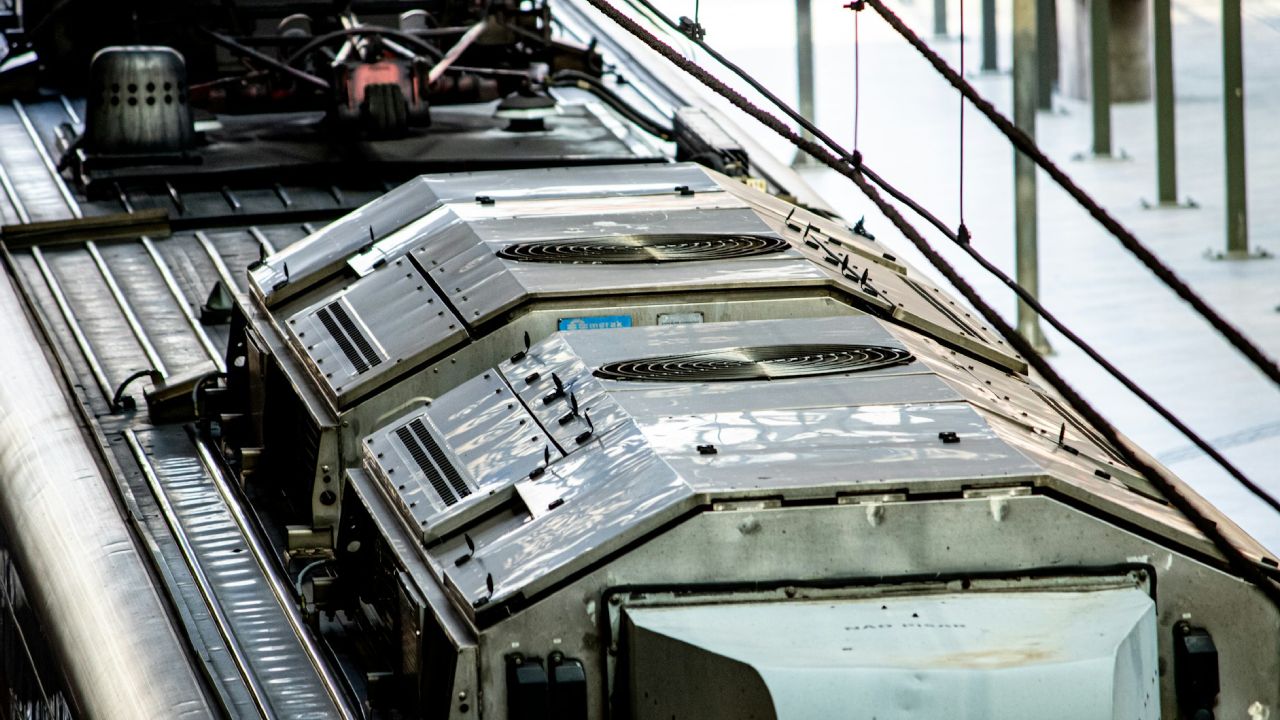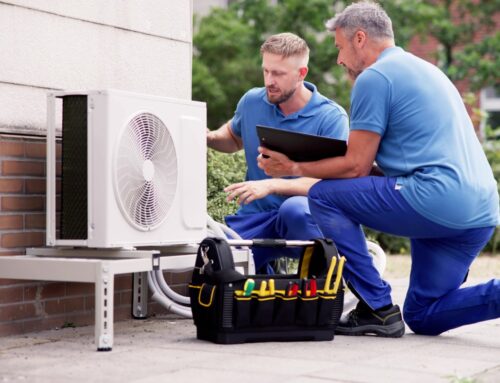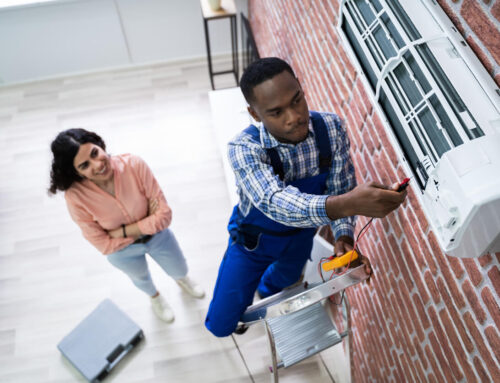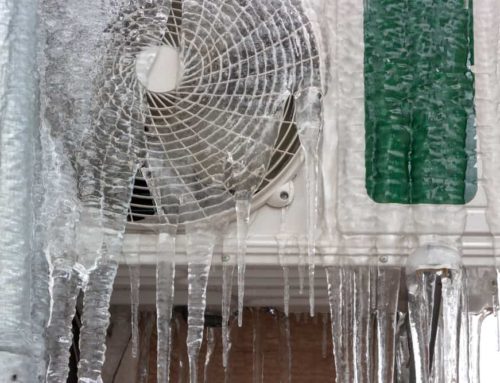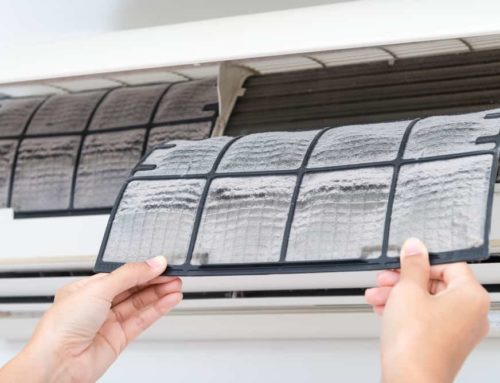Rooftop Commercial Air Conditioning Units, commonly known as RTUs, are becoming a staple in the HVAC industry for businesses seeking efficient and space-saving solutions. These systems, perched atop buildings, offer a unique blend of advantages and disadvantages that are important for contractors, building owners, and AC enthusiasts to consider. On the upside, rooftop HVAC units can simplify installation and maintenance processes while freeing up valuable indoor space.
However, they also come with challenges such as exposure to weather conditions and potential noise issues. In this guide, we’ll delve into the pros and cons of rooftop units, providing you with the insights needed to make informed decisions and explore how Chills AC can support your cooling needs.
Introduction to Rooftop HVAC Systems
Understanding Rooftop Units
Rooftop units, or RTUs, are integral to modern commercial HVAC systems. These compact units are installed on the roof of a building and handle all aspects of air conditioning, including cooling, heating, and ventilation. By situating HVAC equipment on the roof, businesses can maximize their indoor space—a huge benefit for commercial settings where every square foot counts. RTUs are typically packaged systems, meaning all components are housed in a single unit, which simplifies installation and maintenance.
This setup can be especially advantageous for contractors seeking efficient installation processes. However, it’s crucial to understand that rooftop HVAC units are exposed to the elements, which can contribute to wear and tear. Despite these challenges, RTUs remain a popular choice due to their effectiveness and space-saving benefits. Understanding these units’ functionalities and limitations is essential for making informed decisions about your commercial air conditioning needs.
Importance in Commercial Settings
Rooftop HVAC systems play a pivotal role in commercial settings, offering numerous advantages that cater to the unique demands of businesses. One of their primary benefits is the ability to save floor space, a crucial factor for businesses where space optimization is key. By relocating HVAC equipment to the roof, businesses can utilize their interiors for core operations or customer-centric activities. Moreover, RTUs are designed to handle larger volumes of air, making them well-suited for the expansive spaces typical in commercial buildings. This efficiency translates into better climate control and comfort for both employees and customers.
Additionally, these units can be easily accessed for maintenance without disrupting daily business activities, unlike indoor systems. However, it’s important to recognize the need for regular maintenance due to environmental exposure. Understanding the importance of rooftop HVAC systems in commercial contexts can help business owners make strategic decisions about their heating and cooling needs.
Pros of a Rooftop Unit
Space-Saving Benefits
One of the standout advantages of installing a rooftop HVAC system is the significant space-saving benefit it offers. In commercial settings, every square foot is valuable, and utilizing rooftop space for HVAC equipment allows businesses to maximize their interior layout for operations, customer service, or even storage. By housing HVAC components on the roof, companies can avoid the clutter and obstructions indoor units might cause. This can enhance the aesthetic appeal and functionality of the commercial space, creating a more inviting environment for clients and an efficient workspace for employees.
Moreover, the centralized placement of the RTU on the roof can simplify ductwork design, further conserving indoor space. This strategic use of space is particularly advantageous in urban areas where building footprints are limited. Overall, the space-saving benefits of rooftop HVAC systems can lead to a more organized and efficient business operation, contributing to a better overall business environment.
Easy Maintenance and Access
Rooftop HVAC systems offer notable advantages in terms of maintenance and access. Unlike indoor units, which can disrupt business activities during servicing, rooftop units are isolated from day-to-day operations, allowing for unobtrusive maintenance. Technicians can easily access these units without interrupting the workflow or customer experience within the building. This ease of access not only reduces downtime but also simplifies routine inspections, cleaning, and repairs, ensuring the system operates at peak efficiency.
Additionally, because all components are housed in one location, technicians can perform comprehensive checks and maintenance tasks more efficiently than with dispersed systems. This consolidation can lead to quicker diagnostics and repairs, minimizing potential delays. Furthermore, regular maintenance is essential to mitigate the effects of weather exposure, ensuring the rooftop unit’s longevity and reliability.
Overall, the straightforward access and maintenance of RTUs make them an appealing choice for businesses looking to maintain optimal climate control with minimal operational disruption.
Cons of a Rooftop Unit
Weather Vulnerability
One of the primary drawbacks of rooftop HVAC systems is their vulnerability to weather conditions. Positioned on the roof, these units are constantly exposed to the elements, including rain, wind, snow, and extreme temperatures. Over time, this exposure can lead to wear and tear, potentially affecting the unit’s efficiency and lifespan. For instance, moisture from rain or snow can lead to rust and corrosion, while strong winds may cause physical damage or dislodge components. Additionally, extreme temperatures can impact the performance of the unit, especially if it’s not properly insulated or maintained.
To mitigate these risks, regular maintenance and protective measures, such as weather-resistant coatings and robust housing, are essential. It’s crucial for business owners to consider these factors and ensure that their RTUs are well-maintained and prepared to withstand harsh weather conditions. Understanding these vulnerabilities allows for proactive measures, ensuring the longevity and reliability of the system.
Higher Installation Costs
Installing a rooftop HVAC system often involves higher initial costs compared to traditional ground-level units. The complexity of placing equipment on a roof requires specialized equipment and expertise, which can drive up installation expenses. Cranes or lifts are typically needed to position the unit atop the building, adding to the logistical challenges and costs. Additionally, the structural integrity of the roof must be assessed and potentially reinforced to support the weight of the HVAC system, which can further increase expenses.
Moreover, the ductwork may need to be specially designed to integrate with the rooftop unit, adding to the overall complexity and cost. These initial financial considerations might deter some business owners. However, it’s important to weigh these upfront costs against the long-term benefits and savings that rooftop units can provide, such as improved energy efficiency and space utilization. Careful planning and budgeting can help offset these higher installation costs over time.
Comparing Rooftop HVAC to Alternatives
Rooftop Units vs. Ground Units
When comparing rooftop units (RTUs) to ground units, several key differences arise that can influence a business’s choice. RTUs offer significant space-saving advantages by utilizing rooftop space, thus freeing up valuable ground or indoor area. This can be beneficial in densely populated urban environments where space is at a premium. In contrast, ground units are easier to install and typically incur lower initial setup costs since they don’t require complex lifting equipment or structural assessments.
However, ground units can take up considerable space on the property, potentially limiting expansion or landscaping options. Additionally, ground units are more susceptible to physical damage from vandalism or debris, whereas RTUs are generally more secure due to their elevated position.
However, RTUs face weather-related challenges that ground units do not. Businesses must evaluate these factors based on their specific needs, space availability, and long-term operational goals to determine the most suitable HVAC solution for their situation.
Energy Efficiency Considerations
Energy efficiency is a crucial factor when comparing rooftop HVAC systems to alternative solutions. Rooftop units are often designed with energy efficiency in mind, incorporating advanced technologies such as variable speed fans and economizers that can adjust cooling output based on demand. These features can lead to significant energy savings over time, especially in large commercial spaces.
Moreover, the centralized placement of RTUs can reduce the length and complexity of ductwork, minimizing energy loss and improving overall efficiency. In contrast, traditional ground units might not always offer the same level of technological advancement, potentially resulting in higher energy consumption. However, the efficiency of any system depends heavily on proper installation, maintenance, and usage.
Businesses should consider the specific efficiency ratings of the units they are evaluating and weigh these against their operational demands and energy goals. Ultimately, selecting a system that aligns with energy efficiency objectives can lead to lower operating costs and a reduced environmental impact.
Conclusion and Next Steps
Deciding on a Rooftop HVAC
Deciding on a rooftop HVAC system involves careful consideration of both its advantages and potential drawbacks. Businesses must evaluate factors such as space availability, budget constraints, and specific climate control needs. While rooftop units offer distinct benefits in terms of space-saving and ease of maintenance, the potential higher installation costs and weather vulnerabilities cannot be overlooked. It’s crucial for decision-makers to conduct a comprehensive assessment of their building’s structural capabilities and long-term operational goals.
Consulting with HVAC professionals can provide valuable insights and help tailor solutions to meet specific requirements. Additionally, considering energy efficiency ratings and potential cost savings over time can guide businesses toward a more sustainable decision. Ultimately, choosing a rooftop HVAC system should align with the business’s strategic objectives and operational efficiency goals.
By weighing these factors carefully, businesses can ensure they select a system that not only meets immediate needs but also supports long-term growth and efficiency.
Contact Chills AC for More Information
For businesses considering a rooftop HVAC system, consulting with industry experts can be invaluable. Chills AC offers comprehensive support and guidance to help you make informed decisions tailored to your specific needs. Whether you’re looking to explore the benefits of RTUs, need assistance with installation, or require ongoing maintenance services, the team at Chills AC is equipped with the expertise and resources necessary to assist.
By engaging with Chills AC, you can gain insights into the latest HVAC technologies and energy-efficient solutions that can enhance your business operations. Our professionals are committed to providing clear, actionable recommendations to optimize your climate control systems. Reach out to Chills AC to discuss your HVAC needs, request a consultation, or learn more about our diverse range of services. We are here to support your journey towards a more efficient and effective HVAC solution. Connect with us today to take the next step in achieving optimal business comfort and efficiency.

